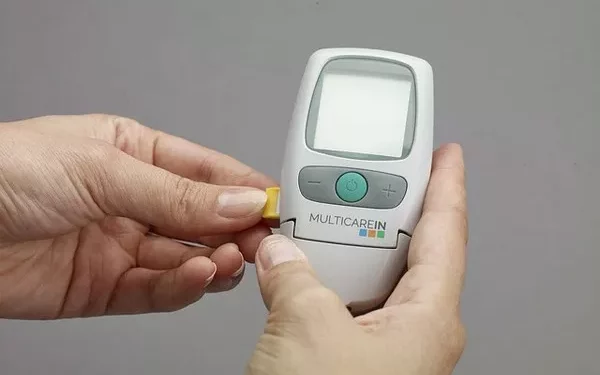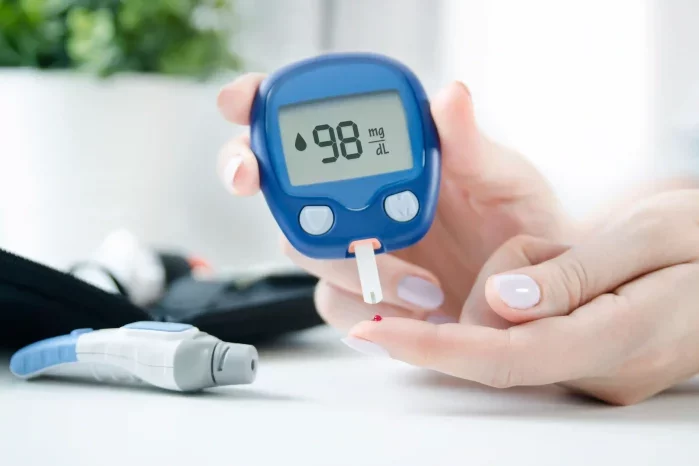Blood sugar, or blood glucose, is an essential element in the body’s overall health, playing a key role in providing energy for cells. For individuals with diabetes, however, maintaining blood sugar levels within a target range is vital for managing the condition and avoiding complications. But what exactly should your blood sugar level be? The ideal range for blood sugar varies depending on factors such as the type of diabetes you have, your age, the time of day, and individual health goals.
In this article, we will explore the optimal blood sugar levels for people with diabetes, including the factors that influence these levels, how to monitor them, and what steps you can take to maintain healthy glucose levels. By understanding these guidelines, you can better manage your diabetes, improve your quality of life, and reduce the risk of long-term complications.
Understanding Blood Sugar Levels
Before we dive into the specifics of what your blood sugar levels should be, it is important to understand the role that glucose plays in the body. Glucose is derived from the carbohydrates you eat, and it circulates through the bloodstream to provide energy for cells. When functioning properly, the pancreas releases insulin, a hormone that allows glucose to enter cells. However, in diabetes, the body’s ability to produce or respond to insulin is impaired, leading to higher-than-normal blood glucose levels.
Managing blood sugar involves maintaining a balance—too much glucose in the bloodstream can cause damage to various organs, while too little glucose can lead to hypoglycemia (low blood sugar), which can be equally dangerous. A target blood sugar range is necessary to ensure both short- and long-term health.
What Should My Blood Sugar Levels Be?
The target blood sugar levels for individuals with diabetes are usually different from those without diabetes. The general recommendations vary based on factors such as age, type of diabetes (type 1, type 2, or gestational diabetes), and whether the person is fasting or after meals. Let’s take a closer look at the key benchmarks for blood glucose management.
1. Fasting Blood Sugar Levels
Fasting blood glucose levels refer to the amount of glucose in the blood after not eating for at least 8 hours, usually measured in the morning before breakfast. For someone with diabetes, the target fasting blood sugar level is typically as follows:
- Normal range: 70 to 99 mg/dL (3.9 to 5.5 mmol/L)
- Prediabetes: 100 to 125 mg/dL (5.6 to 6.9 mmol/L)
- Diabetes: 126 mg/dL (7.0 mmol/L) or higher on two separate occasions
It’s important to keep fasting glucose levels in the target range to avoid complications such as heart disease, nerve damage, and kidney problems.
2. Postprandial (After Meal) Blood Sugar Levels
After eating, the body experiences a rise in blood glucose levels. The postprandial target levels are important because high post-meal glucose spikes can contribute to complications over time. For individuals with diabetes, the following are typical targets:
Normal range (for non-diabetics): Less than 140 mg/dL (7.8 mmol/L) within 2 hours after eating
Post-meal target for diabetics: Less than 180 mg/dL (10.0 mmol/L) within 1-2 hours after eating
Maintaining postprandial blood glucose levels within this range can help reduce the risk of diabetic complications such as retinopathy and neuropathy.
3. HbA1c Levels: A Long-Term Indicator
While fasting and postprandial blood glucose levels provide insight into daily fluctuations, HbA1c offers a long-term view. HbA1c, also known as the glycated hemoglobin test, measures the average blood glucose levels over the past 2-3 months by evaluating the percentage of hemoglobin proteins that are coated with sugar (glycated). The recommended target for HbA1c levels is:
Normal range (for non-diabetics): Below 5.7%
Prediabetes range: 5.7% to 6.4%
Diabetes range: 6.5% or higher
Target for well-controlled diabetes: Below 7% (this can vary depending on the individual’s health and doctor’s advice)
An HbA1c below 7% is generally considered good diabetes management, but the specific target may be adjusted based on individual circumstances, including age, other health conditions, and how well blood sugar is being controlled.
Factors Affecting Blood Sugar Levels
Understanding what your blood sugar levels should be is only part of the equation. Several factors can influence your glucose levels throughout the day. Let’s examine these factors in greater detail.
1. Diet
The food you eat plays a significant role in regulating blood sugar levels. Foods that are high in refined carbohydrates and sugars cause rapid spikes in blood glucose, while foods that are rich in fiber, protein, and healthy fats help slow the absorption of glucose.
Complex carbohydrates such as whole grains, legumes, and vegetables should be prioritized, while sugary snacks, soft drinks, and processed foods should be limited.
Fiber-rich foods such as fruits, vegetables, beans, and nuts can help maintain stable blood sugar by slowing down digestion and the absorption of glucose.
Glycemic index (GI): Foods with a low GI (under 55) are digested more slowly and have a smaller impact on blood glucose levels compared to high-GI foods.
2. Physical Activity
Exercise helps lower blood sugar levels by increasing insulin sensitivity and encouraging the muscles to use glucose for energy. Regular physical activity can help prevent or delay the onset of type 2 diabetes and help manage blood glucose levels in individuals already diagnosed.
Aerobic exercises such as walking, cycling, or swimming help improve overall cardiovascular health and promote better glucose control.
Strength training can improve muscle mass, which helps increase the body’s use of glucose and improve insulin sensitivity.
3. Stress
When you’re under stress, the body releases hormones such as cortisol and adrenaline that can increase blood sugar levels. Chronic stress can lead to sustained high blood glucose levels, making diabetes management more difficult.
Stress management techniques such as mindfulness, deep breathing exercises, and yoga can help mitigate the impact of stress on blood sugar levels.
4. Medications
For those with diabetes, medications such as insulin or oral diabetes drugs are often prescribed to help regulate blood glucose levels. The type and dosage of medication you take will influence your blood sugar readings. It’s important to follow your doctor’s recommendations for medication and to monitor your blood sugar regularly to ensure optimal control.
5. Illness
When the body is fighting an illness, stress hormones are released that can cause an increase in blood sugar levels. During illness, it may be more challenging to keep blood glucose levels in the target range, and extra care should be taken to monitor glucose levels and adjust medications as necessary.
Monitoring Your Blood Sugar Levels
To effectively manage your blood sugar, it’s crucial to monitor it regularly. This allows you to see how well your lifestyle choices—such as diet, exercise, and medication—are working in keeping your blood glucose within the target range. There are several methods for monitoring blood sugar:
1. Blood Glucose Meters
The most common way to monitor blood glucose is through the use of a blood glucose meter. This portable device requires a small sample of blood, usually obtained from a fingerstick, to measure your blood glucose level.
2. Continuous Glucose Monitoring (CGM)
A continuous glucose monitor (CGM) is a device that provides real-time, continuous monitoring of glucose levels. CGMs are worn on the body and can provide more detailed data on how glucose levels fluctuate throughout the day and night.
3. Regular HbA1c Testing
As mentioned, HbA1c testing is typically done every 3 to 6 months to give an overview of long-term blood glucose control. It’s important to have your HbA1c levels checked regularly as part of your diabetes care routine.
Maintaining Healthy Blood Sugar Levels: Strategies for Success
Achieving and maintaining the ideal blood sugar levels requires a multi-faceted approach. Below are some strategies that can help individuals with diabetes stay on track with their blood glucose management.
1. Balanced Diet
A balanced diet consisting of whole, unprocessed foods that are high in fiber and low in refined sugars is key to managing blood glucose levels. Regular meals and snacks throughout the day, rather than large, infrequent meals, can also help avoid blood sugar spikes and dips.
2. Regular Physical Activity
Exercise is a powerful tool in diabetes management. Consistent physical activity helps lower blood sugar levels and can prevent complications associated with high glucose levels.
3. Monitoring and Adjusting Medications
Regular monitoring of blood sugar levels is crucial to ensure that medications are working effectively. Adjusting medication based on your doctor’s recommendations can help fine-tune your blood sugar control.
4. Stress Management
Managing stress through relaxation techniques, social support, and adequate rest can also contribute to better blood sugar control.
Conclusion
Maintaining the right blood sugar level is fundamental to the management of diabetes. By understanding the target levels for fasting, postprandial, and long-term glucose control, as well as the factors that influence your blood sugar, you can take proactive steps to maintain healthy glucose levels. Working closely with your healthcare provider, adopting a healthy lifestyle, and monitoring your blood sugar regularly are all critical components of effective diabetes management.
By taking control of your blood sugar levels, you can reduce the risk of complications, improve your overall health, and lead a more fulfilling life.
Related topics:
When Should I Check My Blood Sugar for Gestational Diabetes?



























